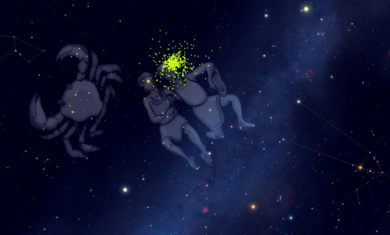Betelgeuse: A Supernova in the Works
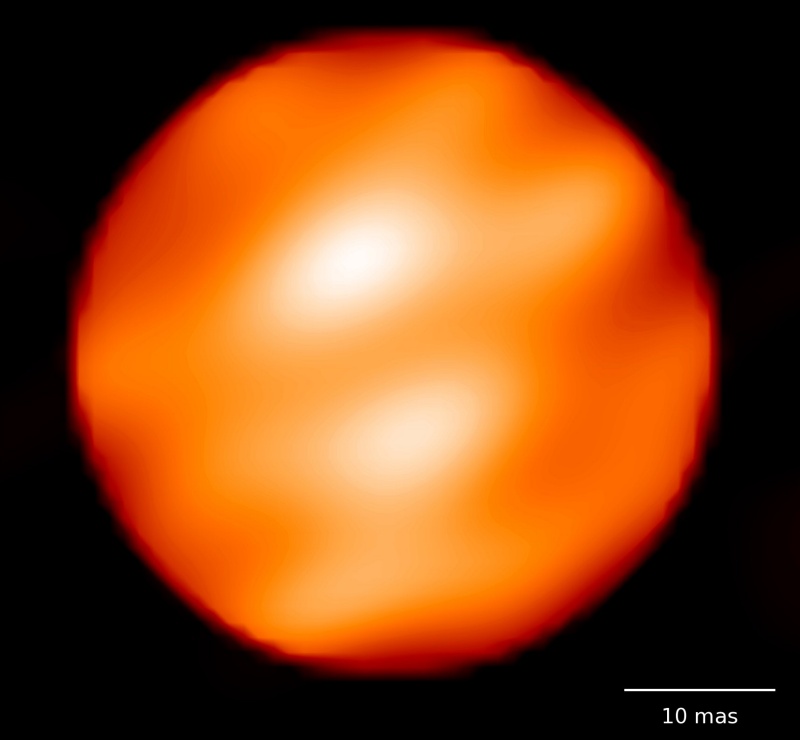
Header Image: The spotty surface of Betelgeuse shown with two, large, bright, star spots. The spots potentially represent enormous convective cells rising from below the supergiant’s surface. They are bright because they’re hotter than the rest of the surface, but both spots and surface are cooler than the Sun. Image Credit: Xavier Haubois (Observatoire de Paris) et al.
Did you know that 32 supernovae take place in our universe every second? That’s three million supernovae each day and one billion supernovae each year!
A supernova is the biggest explosion known to man and occurs when a massive star (much more massive than our Sun) runs out of fuel and thus can no longer fight against the forces of gravity.
Although supernovae are a frequent occurrence in our universe, there have only been a few instances in human history where one was visible to the naked eye.
The last visible supernova in our Milky Way occurred in 1604 and was known as Kepler’s Star. This supernova event was so bright that it outshone all other stars in the night sky and was visible during the day for over three weeks!
In the 400 years following Kepler’s Star, astronomers have waited patiently to see when the next major supernova would make an appearance.
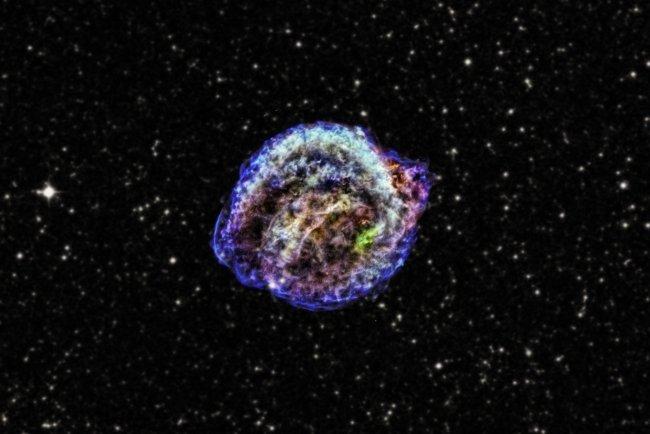
The strongest contender for this is Betelgeuse, a red supergiant that is about 700 light years away from Earth. From October 2019 and into early 2020, something strange happened with Betelgeuse—it began dimming!
Since then, the astronomy community has been ablaze with speculation regarding the true cause for the star’s decrease in luminosity.
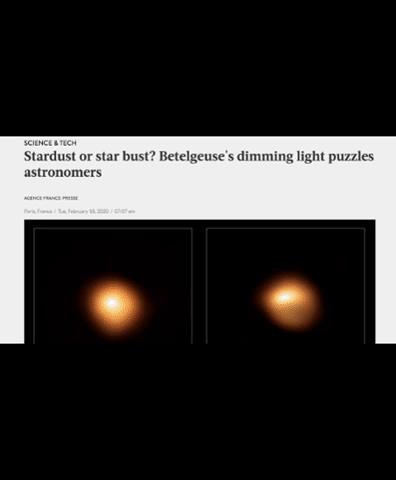
Was it some sort of fluke in Betelgeuse’s already variable brightness? Had celestial dust blocked some of the star’s light from passing through? Was a supernova imminent? What could have possibly caused Betelgeuse to dim at such unprecedented rates?!
Before we get into Betelgeuse’s recent (and peculiar) behavior, let’s first cover the basics of this massive star.
About Betelgeuse
Betelgeuse is one of the brightest stars in the night sky and can easily be found in the right shoulder of the constellation Orion.
As a red supergiant, Betelgeuse is thousands of times brighter and 1,400 times larger than our Sun.
If you were to replace our Sun with Betelgeuse it would stretch far beyond the orbits of Mars and Jupiter!
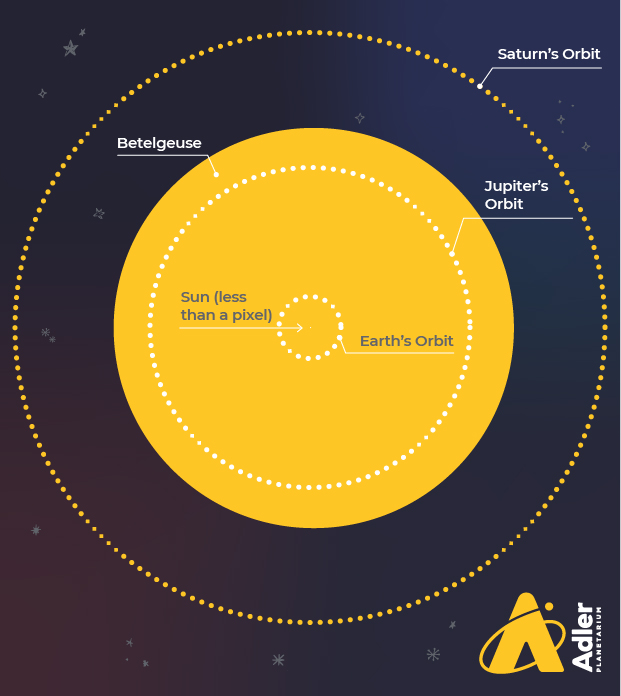
That’s huge! For context, the distance between our Sun and Jupiter is over 400 million miles!
A general rule of thumb in astronomy: the larger a star is the shorter its lifespan will be. At 10 million years old, Betelgeuse is currently in the final stages of its life.
This means that Betelgeuse has stopped fusing hydrogen at its core and is now fusing helium into heavier elements like carbon, oxygen, neon, magnesium, and (most importantly) iron. Once iron is formed, a supernova becomes increasingly imminent because fusing iron into something heavier doesn’t release energy—it requires it.
Betelgeuse is essentially a ticking time bomb, which is why its recent dimming has left astronomers wondering what could be the culprit.
Why Was It Dimming?
Even before the recorded dimming in October 2019, Betelgeuse was always a variable star with a known pulsation cycle that caused it to vary in brightness and size on a timescale of about 420–430 days. This is a phenomenon shared by many red supergiants and occurs when the outer layers of a star expand and contract causing the surface area to fluctuate.
In the months following October 2019, Betelgeuse had strayed from its expected cycle and lost a staggering two-thirds of its brilliance. Causing it to drop from being the 10th brightest star in the sky to not even being in the top 20!
But why?
One of the explanations given was that Betelgeuse was gearing up to supernova. Although it was always an unlikely hypothesis, the supernova explanation became even more unlikely when Betelgeuse stopped dimming in February 2020.
Scientists are now beginning to think that a combination of episodic mass loss and an increase in circumstellar dust caused the dimming.
You see, various observations of the star reveal that it is shrouded in vast clouds of dust made from tiny grains of carbon, siliceous, aluminum oxide, and more. This dust would have formed in the bloated star’s atmosphere, partially dimming it in the process.
When Betelgeuse Goes Supernova
Okay, so (unfortunately) it would appear that the dimming that began in October 2019 was probably not caused by an imminent supernova.

I know, I know—what a bummer!
But don’t be disheartened quite yet! Betelgeuse is set to supernova any time between today and the next 100,000 years. That is a blip on the cosmic scale!
With that said, what will happen when Betelgeuse goes supernova?!
You can rest assured that life on Earth would be at no risk from the explosion. In order for a supernova to pose a threat it has to be extremely close to Earth—within several dozen light years. Remember, Betelgeuse is over 700 light years away from us!
Although no imminent threat would be posed, our skies would definitely be changed.
Astronomers hypothesize that a Betelgeuse supernova would be as bright as the half-moon and visible (even during the day) for more than three months.
During this period of time, the supernova would be so luminous that it would cast shadows at night, potentially affecting the moon navigation of animals who are already affected by light pollution. It may even cause astronomers to have some of their observations disrupted by the new influx of light!
So, although we don’t know when Betelgeuse will go supernova—perhaps tomorrow or maybe in a millennia—when it finally happens, it will be a cosmic spectacle well worth the wait!
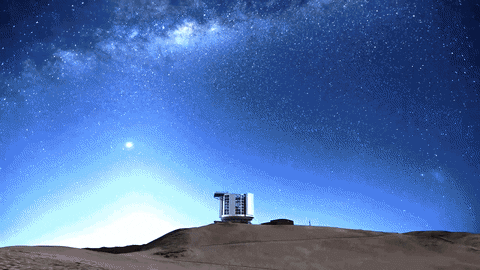
Stay tuned for more awesome space facts on the next AstroFan.
Thank you for reading!
—Bianca, a.k.a AstroFan




